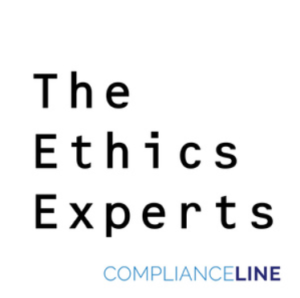David Povey, in Why compliance must play part in sustainability initiatives, reported that in an International Compliance Association survey, over 64% of respondents said compliance must tackle the issue, one respondent stated, “These issues represent the biggest risks for humanity but also the greatest opportunities. The sooner ethics & compliance get on board with tackling these, the better!” I believe that compliance must led the Environmental, Social and Corporate Governance (ESG) initiative. Kristy Grant Hart lays out in some detail about why a corporate compliance function should take the lead in a corporate ESG effort.
What is it compliance officers do every day? They perform risk assessments. They then build out Codes of Conduct, policies and procedures and internal controls based upon the assessed risks. They train on all of these sets of written procedures. They incentivize the doing of compliance and discipline employees who engage in non-compliant behavior. They monitor and enhance compliance programs based upon this monitoring. They create reports around their efforts and report to Boards of Directors about compliance and work with Boards and senior management to move the compliance program forward. These are the basic components of a corporate ESG effort.
In a 2021 cross-industry survey, entitled ESG Clarity: Benchmark Your Initiative from Compliance Week and Fulcrum, a UK based multidisciplinary firm, found strong compliance support for ESG initiatives, but a lack of understanding about how to monitor and measure results. Aaron Nicodemus, writing in Compliance Week, reported, “respondents said while their organizations were largely successful in launching ESG strategies and goals in their business plans, they were less successful in understanding ESG-related risks and applying those lessons to their initiatives. Only 13 percent of respondents said their companies have fully implemented and embedded an ESG strategy. Nearly 70 percent said their firms were either in the process of implementation (40 percent) or that it was more ad hoc at this point (29 percent).” Further, Pam Shearing, a managing partner at Fulcrum, said of these findings, “People are really trying to find their way with ESG, but there is some confusion as to how to measure it. ESG is an evolving conversation and, as such, companies need to continue to work on their ESG strategies. For some companies, there is still a lot of work to do.”
Clearly ESG, like compliance, all starts that the top of an organization. ESG must have full buy-in from senior management in any organization. Shearing also related, “clear goals would become part of the company’s culture, with everyone from the C-suite to the shop floor understanding what ESG is and how to apply it to everyday practices. Employees should be encouraged to report what parts of the initiative are working and what are not so companies can implement remedial steps. You really have to involve everyone to have a culture across the firm that everyone understands what ESG is and how to bring it into their everyday practices.”
But ESG is not simply driven by senior management. There are multiple other stakeholders who are driving this business initiative. You can start with the Business Roundtable’s Statement on the Purpose of a Corporation, with its list of at least five stakeholders in every corporation; shareholders, employees, localities, business relationships and customers. ESG is being driven in multiple ways on multiple fronts. In the Survey, “40 percent of respondents listed employees as a driver of corporate ESG initiatives. Companies are finding promoting and adhering to ESG initiatives is helpful for retaining employees and attracting new ones. Companies that weathered the pandemic and stuck to their ESG goals can see a competitive advantage in hiring.” Shearing said, “It goes back to ESG-related risks and opportunities. If your firm is doing the right thing for the environment, for society, for employees, and across its supply chain, it really can attract the best talent.”
But having an ESG program can also be a business positive. The Survey found that nearly 20 percent of respondents said their organization had refused to work with a party on ESG grounds over the past three years. As we saw in compliance in the final years of the first decade of the 21st Century and well into the second decade, this business-to-business driver of ESG will be one of the most potent reasons for the acceptance and incorporation of ESG into corporate portfolios.
Additionally, looking back the Update to the Evaluation of Corporate Compliance Programs, released by the Department of Justice (DOJ) in June 2020, you can see how the DOJ presaged this discuss about compliance leading the corporate ESG effort with its requirement that a Chief Compliance Officer (CCO) and compliance function have access to all corporate data. With no other corporate function mandated by the DOJ to have access to such data, this is yet another reason compliance should lead the corporate ESG effort.
The bottom line is that the design, creation, implementation and enhancement of a corporate ESG program is a natural extension of a corporate compliance program. Every CCO and compliance professional should be looking at their company to see how they can work on an overall ESG strategy. There are no other corporate functions which have been the overall reach of compliance, together with the government-mandated access to data and information. Further, the work of setting up and running a corporate ESG program involves skills and know how that a corporate compliance officer uses day-in and day-out. I hope you will join me by taking the lead at your organization.




